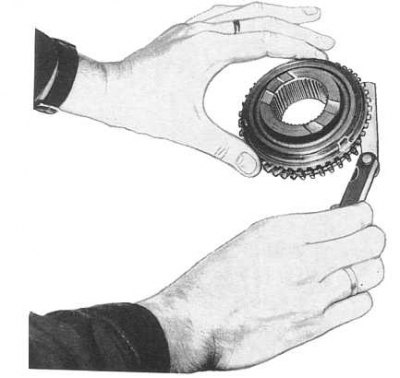2. Check the condition of all shafts and gears. Replace worn or damaged components.
3. Check the drive chain for cracks, signs of wear and damage.
4. Inspect the bearings for signs of wear and damage. Check their freedom of rotation.
5. Check up a condition of sliding keys of the synchronizer and their spring.

6. Check the synchronizer ring for cracks, deformation and damage. Fully seat the ring on the output shaft clutch gear. Measure the clearance between the gear and the blocking ring (see accompanying illustration). Compare measurement result with regulatory requirements (see tables of sizes and adjustments at the end of the guide), if necessary, replace the ring and/or gear.
7. Check the lever, shift rods and forks for signs of wear, damage and deformation. Make sure the sliding surfaces are smooth. Check the tension of the clamp springs.
8. Check crankcases for cracks or other damage.
9. Replace defective components.
Note. If the control lever or its mounting pin require replacement, they should be changed as a set.